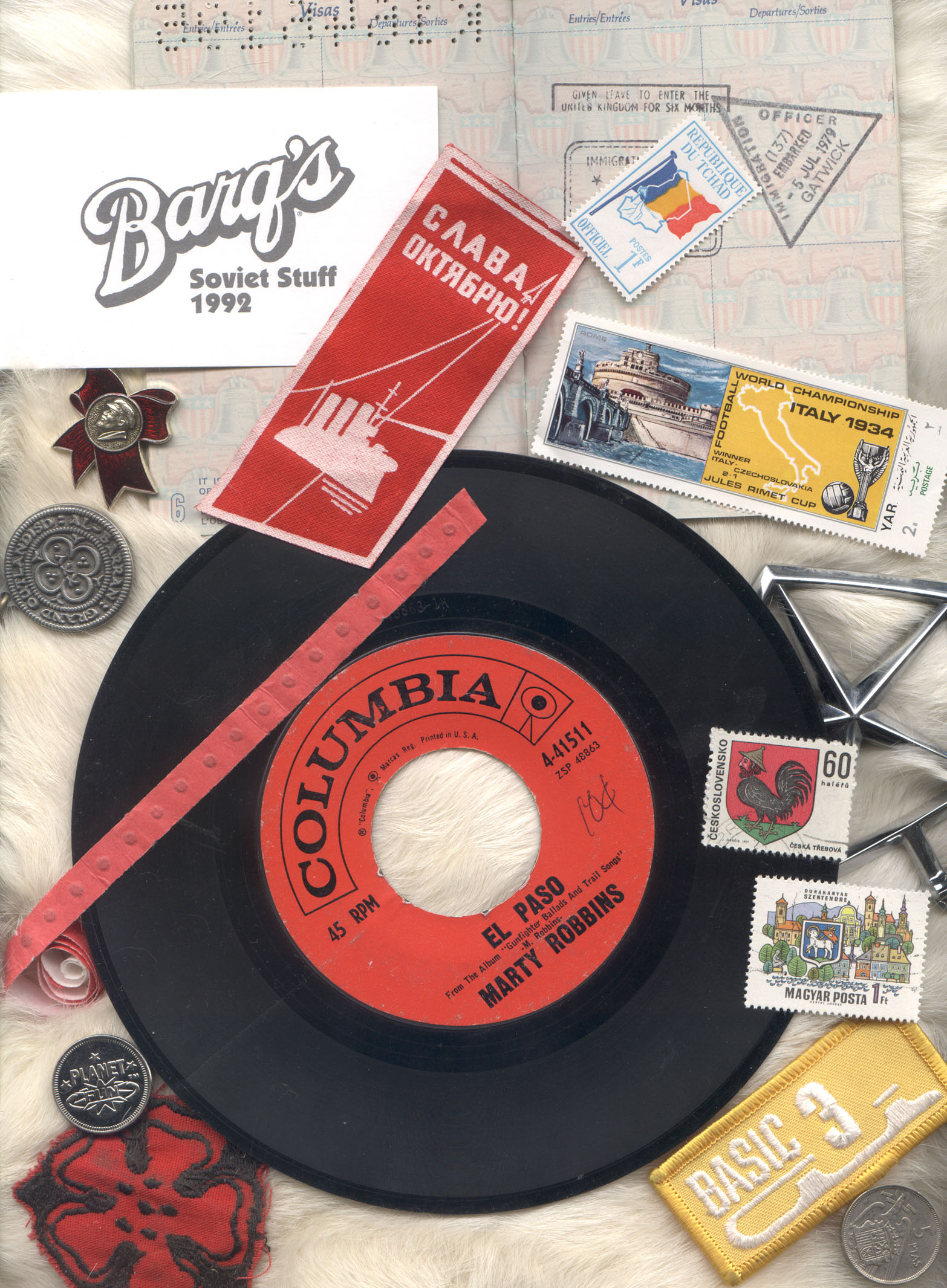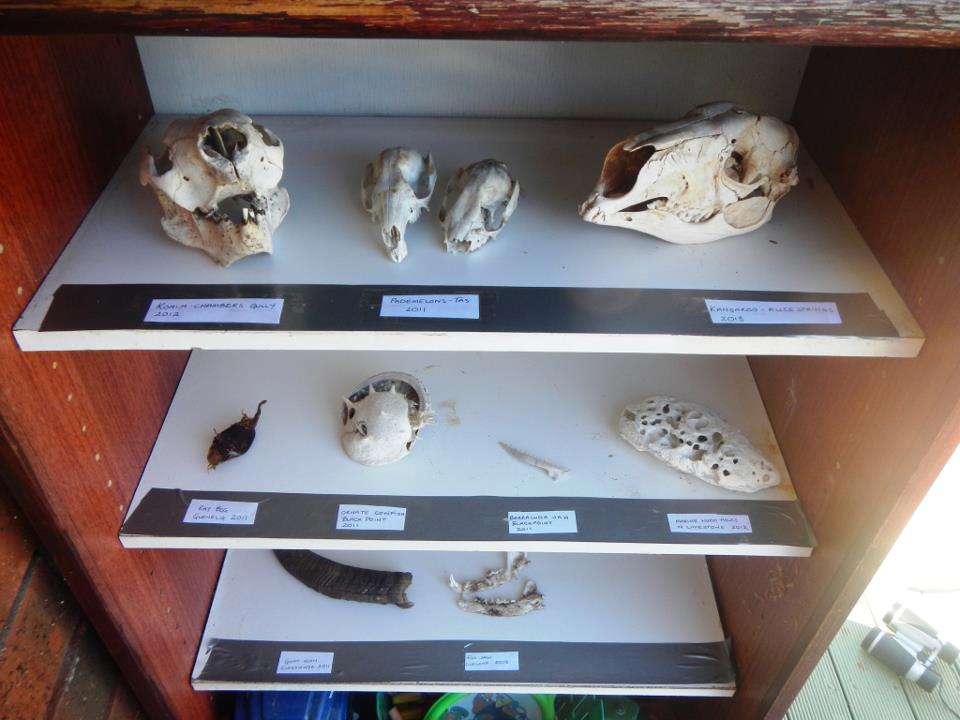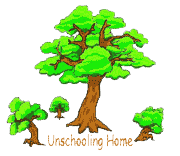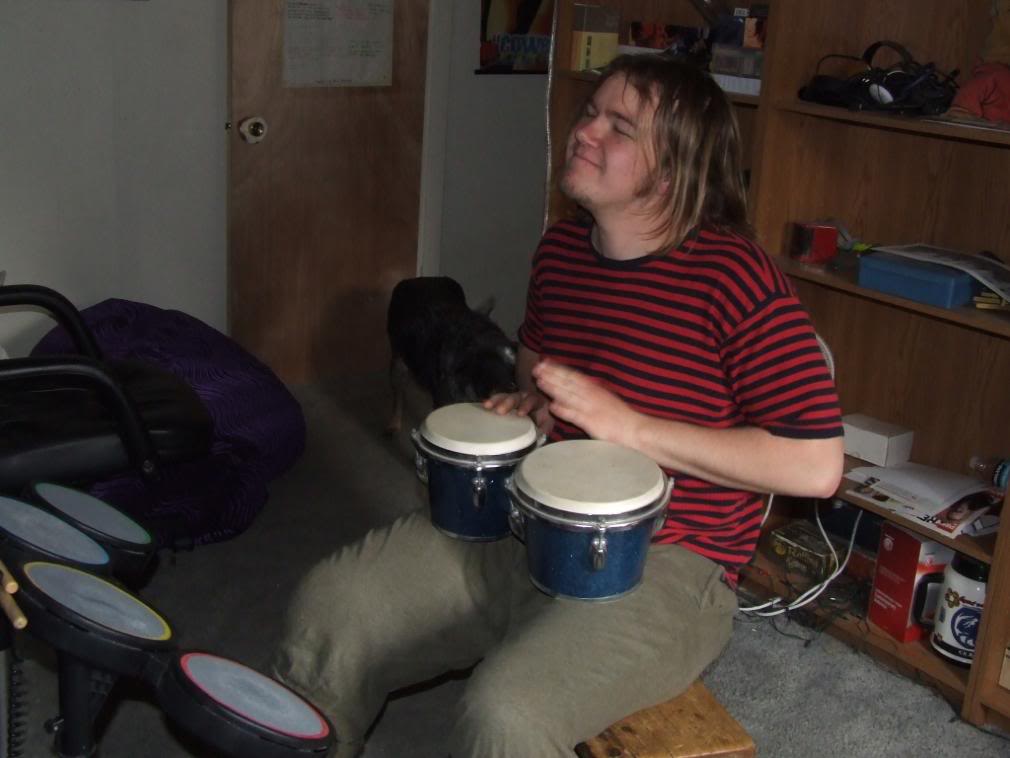
Once my kids were watching something or other on TV about woodcuts and block printing. I told them I had some block-printed cloth and they got pretty excited about seeing it.
I found an Indian bedspread, printed in two passes, with blocks, and we looked at where they had made some great matches, where they had missed, and how it all might work (because I don't know what their work stations look like, whether they do edges first, or what). I found two scarves made of fine cotton, block-printed each in one color only. Then I found some screen-printed silk handkerchiefs from China that a friend had given me after his mother died. Still in the packages, and some matching pairs, so we could compare. They might have been mass produced, but still... Then I found a piece of Hawaiian cloth. I don't know the name of it, but my husband's mom brought it from Hawaii. I think it's a kind of Polynesian kilt.
I also had a piece of woven paisley, a batik sari and a sari with gold woven into it. I didn't go into details about those except to point out that most of those examples were made in India. Someday I'll read them The Road to Agra, a kids' adventure novel that deals in passing with the child labor involved in weaving.
With that my children decided that anything they might want to see, I would have. There have been many times that they were right!
When they asked what pogs were supposed to be REALLY, I found an old milk bottle that had been stuck up in the top of a cabinet just in case a kid might ever want to see it, next to the old molded Pepsi bottle, and the not-so-old Coca Cola bottle. I told them stories of picking up bottles to turn in for the two-cent deposit. It's the equivalent of picking up aluminum cans now, but they're heavy and fragile. The kids had never known about bottle deposits like that, where the bottles were reused instead of melted down. I told them about people throwing bottles out of car windows on the highways, and all the broken glass we walked on and around as kids, and that people used to shoot at bottles for practice.
Kids nowadays take "Keep American Beautiful" for granted. They can't believe there used to be rusting bedsprings and old washing machines dumped all over the place, and that hamburger wrappers were as likely as not to go out the window of a car. I told them about how the old glass would weather, and what had been in the sand and sun of New Mexico for long enough would turn into smooth-edged, opaque little jewels we used for hopscotch markers. Pogs to hopscotch—full circle, because I had those bottles.
My maiden name was Adams, and I remember being taunted by kids singing the theme song to The Addams Family TV show, but that line "Their house is a museum where people come to see 'em" stuck with me always. When I go to other people's houses I love to see what they have. The things they've chosen to keep, or collected over the years, teach me a good deal about those people themselves—their interests, their history, their sense of humor, and philosophy.
Sometimes my kids get bored, and I can light up a half hour by digging into some box or drawer and producing something they've never yet seen. Like a magician pulling a bouquet of flowers out of a wand, I pull out a little doll, or some Australian coins, electric curlers (for sorting, putting back on the rods, and discussing), muffin tins, poker chips, grandpa's bow ties, a hand-cranked egg beater to froth up soapy water (I wish I had a hand-cranked drill; my dad did). Whenever I pull these things out I tell the kids why I have them and what I know about them. I told about the gold strip in Australian paper money, about ties my dad used to have with cowboys and bucking broncos on them, about patterned muffin tins being pressed kind of like steel car parts are pressed, of getting my hair stuck in electric curlers when I was a teenager and crying because I was afraid my long hair would have to be cut off.
Can you remember visiting grandparents or older relatives when you were young and finding cool "stuff" in their storerooms? My granny had "carding combs" I think she called them—steel brushes for cleaning cotton and lining up the fibers. She never spun, as far as I know, but she would use raw cotton to put into quilts, taking the seeds out herself and carding the cotton. When my mom was little, their whole family had picked cotton by hand for a living, moving from town to town in West Texas. My other grandmother, my Mamaw, had an ironing machine, and said they used to iron sheets and pillow cases with it.
There are probably things in your house that would fascinate your children but you haven't thought to offer or they haven't found the good stuff yet. Consider interesting things you have that might be of interest for being old, foreign, specially made or obtained under special circumstances:
- ornaments
- dishes / pots /molds
- silverware—even one old piece you know something about
- egg beater
- flour sifter
- can openers ("church keys")
- old bottles or other containers
- your old clothes
- recordings—reel to reel, 45's, 78's, 8-tracks
- manual typewriter
- push mower
- pre-transistor radio
- musical instruments
- jewelry (and any old photos of people wearing that actual jewelry)
- photos of people with cars (I try to get cars in photos to date them)
- books, magazines
- clippings
- ribbons from 4-H, scout badges, school certificates, class photos, report cards
- toys from your childhood
- awards / trophies (photos of the activity?)
- funeral cards
- wedding announcements/certificates
- birth announcements
- games (any old monopoly games in your attic?)
- teach clapping games or jump rope (living history museum
) - foods no longer commonly used (find a fondue pot and make them something)
- poker chips (patterns, counting, sorting)
- sewing supplies / buttons
- old shoes
- uniforms
- curlers / bobby pins
- drafting supplies
- typewriter eraser with a brush
- old pens, paper, ancient stationery
- flip-open address book like people had on desks in 1963
- old phone
- old phonebook or school annual with alpha prefixes—find out what your local prefix used to be (if it's old enough)
- art
- music
- things relating to WWII, Korea, Viet Nam
Many people in the southwest have wagon wheels. They're not flat—the hub is out at an angle from the wheel, and the spokes hold it at that angle for strength and stability. It's fascinating to look at one, and touch it, and know that it took an experienced wheelwright to make that wheel, and a blacksmith to put the iron on it, and that the very wheel came here from somewhere else—maybe Mexico, maybe Missouri, maybe Kansas. It was made somewhere, and came here, and now it's sitting in someone's yard.
Do you have rocks or mineral samples?
Do you have an emerald or a ruby or a diamond?
Do you have a really old camera?
Any leather-bound books or boxes?
My husband has something the kids haven't seen yet—a set of bongo drums.
Originally published in Home Education Magazine, May-June 1999, when Kirby was 12, Marty was 10, and Holly was 7.
Actual junk from my actual office,
actually scanned on my actual scanner:

Update on webpage-prep day:
The title-art is taken from the Polynesian cloth mentioned above. When looking for it, July 17, 2002, Keith and I found some other good things which haven't surfaced for a while. Holly had never played with the abacus, and we let her have that. The good boyscout compass, though, is still hidden and will be saved for her birthday. The saris and woven paisley have been given away as gifts since the article was first written.
Note received May 23, 2009:
I think I found your blog by starting at Friday Fill-Ins. Someone has a link to House as a Museum.I loved it! Just wanted to let you know.
In Samoan a "kilt" is called a lava-lava. :)
Enjoyed your beautiful writing, your blog and your family.
SJ has left a new comment on your post "Messages from your stuff":
A few months into our homeschooling adventure my 8 year old daughter spontaneously said "Our house is like a museum with really cool stuff in it!" This was the moment I decided it was going to be alright.
Jo Isaac sent a note and photo, from Adelaide:
Kai and I just re-vamped what we call our bone collection - Kai wanted it to look like a 'real museum'...it made me think of your "Your House as a Museum" page, so I thought I'd send you a photo of the (almost) finished natural history cabinet at our house!

From top left: Koala, two pademelons (little wallabies), and a female red kangaroo.
Middle: stingray egg, an ornate cowfish, the jaw of a barracuda, and a piece of limstone with marine worm holes.
Bottom: horn of a goat, and jaw of a red fox!Pretty much all found and collected by Kai (6) from all over the place, and cleaned up by me and the insects in the veggie patch (some were pretty clean already though, thankfully).
—Jo Isaac
April 2013

